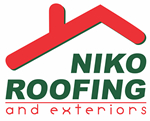Metal roofing has the reputation of only being used on large industrial or commercial structures. While it’s true that metal is a good option for these applications, metal roofing goes far beyond this with use on homes, architectural buildings, and agricultural structures. It often requires little to zero maintenance after it’s installed.
Benefits & Advantages of Metal Roofing
There are a number of reasons to choose metal roofing over other materials, like asphalt shingles, tiles, or concrete. While metal roofing might be the best choice for some home or building owners, we understand that it’s not always to best material for every consumer. The best way to know if metal roofing is a good match for you is to consider some of the most common reasons people decide to buy:
Longevity
Depending upon the type of metal material used, most metal roofs last 60+ years without any signs of degradation or corrosion. Actually, many consumers ultimately decide to purchase a metal roof because it’ll be the last roof that they ever have to put on their home or business.
Durability
When comparing different materials, like wood, concrete, metal, plastic, or glass, metal easily stands out as the strongest and most durable. If properly installed, metal roofing is designed to withstand rain, snow, hail, mold, mildew, strong winds, debris, rodents and other animals.
Also metal roof materials are often Class A fire-rated and noncombustible, meaning its fire resistance is the highest grade possible.
Maintenance
If the roof was correctly installed, the level of upkeep needed to maintain a metal roof is generally minimal. General upkeep would include looking for leaves, branches, and other debris that could get stuck on the roof and in the gutters around twice a year and after strong storms.
There are a number of reasons that metal roofing is environmentally friendly.
- Most metal is highly recyclable, meaning that any tear-off metal, old panels, or even manufactured excess scraps can be recycled and used in future products.
- There are even some metal roofing materials, including aluminum, that are made of already-recycled metal. Nearly 95% of all aluminum roofing is made up of recycled materials.
- Many metals, like zinc and copper, are found in the environment or in the Earth’s crust, which means they can be naturally replenished and sustained over time.
Make sure to specify ahead of construction and installation that recycled content is important to you.
Commercial Buildings
Metal roofing gives business and building owners the peace of mind that their roof is destined to last and not need constant upkeep. Common uses: hospitals, churches, government buildings, schools and universities, military structures, restaurants, stores, businesses, hotels, transportation buildings
Residential Projects
A lot of homeowners don’t think their roof is big enough to warrant a metal roof, but the truth is the size of your roof doesn’t matter.
- The residential market is booming as homeowners begin to realize that metal roofing will actually save them money in the long run.
- There has also been an increase in metal roofing being used as an accent on an awning or as a part of the roof.
Architectural Projects
Metal roofing has the ability to be formed and cut into many different shapes, sizes, and lengths. This variety, along with the durability, variety of colors, and eco-friendly qualities, gives architects many benefits to using metal to create aesthetically pleasing structures.
Structural Uses
Have you ever been inside of a warehouse, factory, or other industrial building where you look up and see the roof from inside? This is a good example of structural metal roofing, which is when metal panels are installed over open framing or on structures that span long lengths and are attached directly to the frame or purlins (additional support beams added to the roof frame).
Agricultural Buildings
Barns and other agricultural buildings are common uses for metal roofing. Agricultural structures traditionally use a lap seam profile, which is when the ends of the panels overlap each other and have sealant or exposed fasteners holding the two panels together.
Metal Material Types
Metal is a very broad term when it comes to roofing, especially because there are nearly 100 metals on the periodic table of elements. Some of the most commonly used metal roofing materials used in the industry are: galvalume coated steel, galvanized steel, stainless steel, aluminum, zinc, copper.
Warranties
One of the best parts of owning a metal roof is the variety of warranty options made available by the metal manufacturers or suppliers. Two of the most common are weathertight warranties, which cover leaks in the roofing system, and paint warranties, which cover certain levels of degradation of the paint system that is applied to the metal substrate. Warranties can vary quite a bit depending on where you live, the climate the roof will be exposed to, the type of roofing material used, and the type of paint system used on the coil.
